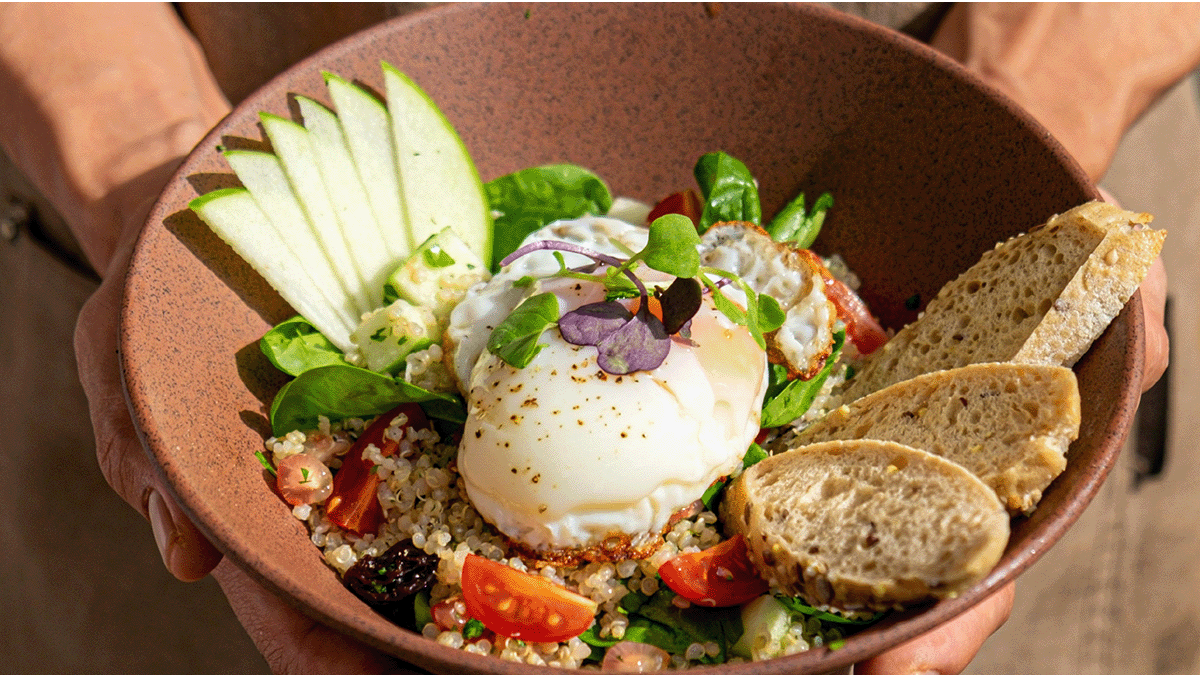Nourishing your body is essential
When managing venous leg ulcers, every choice you make matters. A balanced diet provides the essential nutrients your body needs to repair tissue, reduce swelling, and fight infection. Regular movement helps boost circulation, reduce fluid buildup, and promote faster recovery. In this section, we will show you how simple adjustments to your diet and daily activities can make a real difference in your healing journey.
Protein
Protein is essential for wound healing to help tissue repair. Eating enough protein helps to support the production of collagen, which helps your body to recover faster, reducing the risk of infection. Try to include two portions daily from sources like lean meats, fish, eggs, dairy, beans or nuts.
Protein examples:
-

Meat
Chicken, beef, turkey, pork -

Fish
Salmon, cod, sardines -

Beans
Baked beans, lentils, peas, split peas, chickpeas)
Minerals & vitamins
Aim for five portions daily of fruit and vegetables - fresh, frozen, or dried. Foods rich in vitamin C (such as berries, oranges, and peppers) help build collagen, keeping your skin strong and flexible.
Portion examples:
-

Vegetables
Broccoli, cabbage, carrots, peas, sweetcorn, cucumber, aubergine, etc. -

Fruits
Banana, berries, pineapple, apples, orange, apricots, etc -

Moving your body is essential
Staying active, even in small ways, can improve circulation, reduce swelling, and support healing. If you’re wearing compression bandages or garments, regular movement will make them even more effective.
-

Walk regularly
Try to walk as often as possible while wearing your compression garments or bandages. Movement helps improve circulation, reduces swelling, and supports the healing process. -

Elevate your legs
Raising your legs helps blood and fluid flow back to your heart, improving circulation and reducing swelling. Make it a habit to elevate your legs whenever possible.
Keep moving, even when sitting
Stay mobile with simple seated exercises. If you experience joint or lower back pain, stop the exercise. A mild pulling sensation in the muscles is normal, but if you feel pain, stop and speak with your nurse or doctor for guidance.
-

Ankle rolls
- Sit up straight with your feet flat on the floor.
- Lift one foot and rotate your ankle in a circle.
- Repeat with the other foot.
-

Toe raises
- Keep your heels on the floor and lift your toes up.
- Lower them back down.
-

Heel raises
- Keep your toes on the floor and lift your heels up.
- Lower them back down.
-

Leg raises
- Sit upright with your feet flat on the floor.
- Straighten one leg, hold for a moment, then lower it back down.
- Repeat with the other leg.
-

Knee presses
- Press your hands down onto your knees.
- Gently lift one knee against the pressure of your hands.
-
If you experience any pain, stop and speak with your nurse or doctor for guidance. Even small movements can make a big difference in your healing journey. Stay as active as you can!

